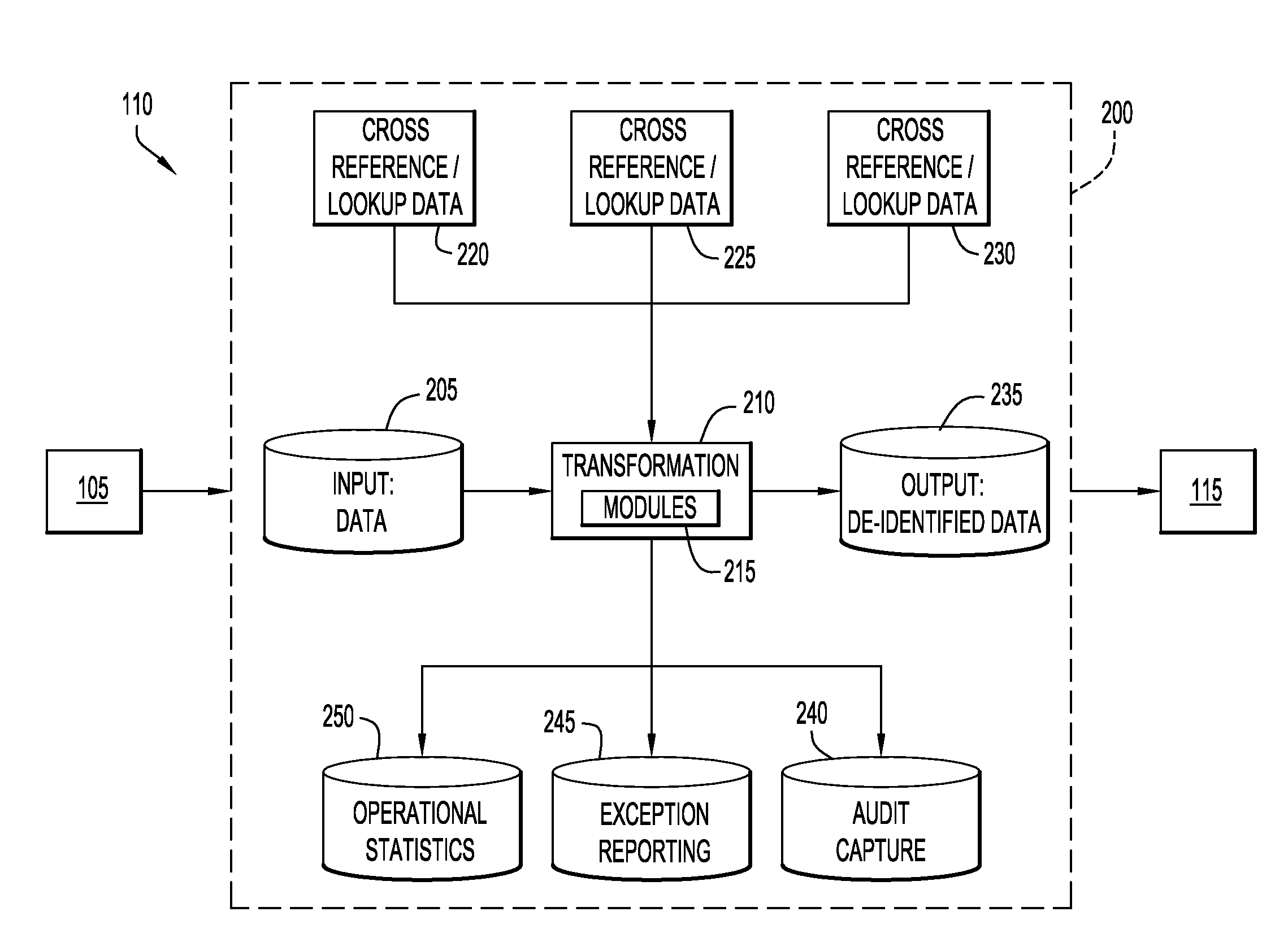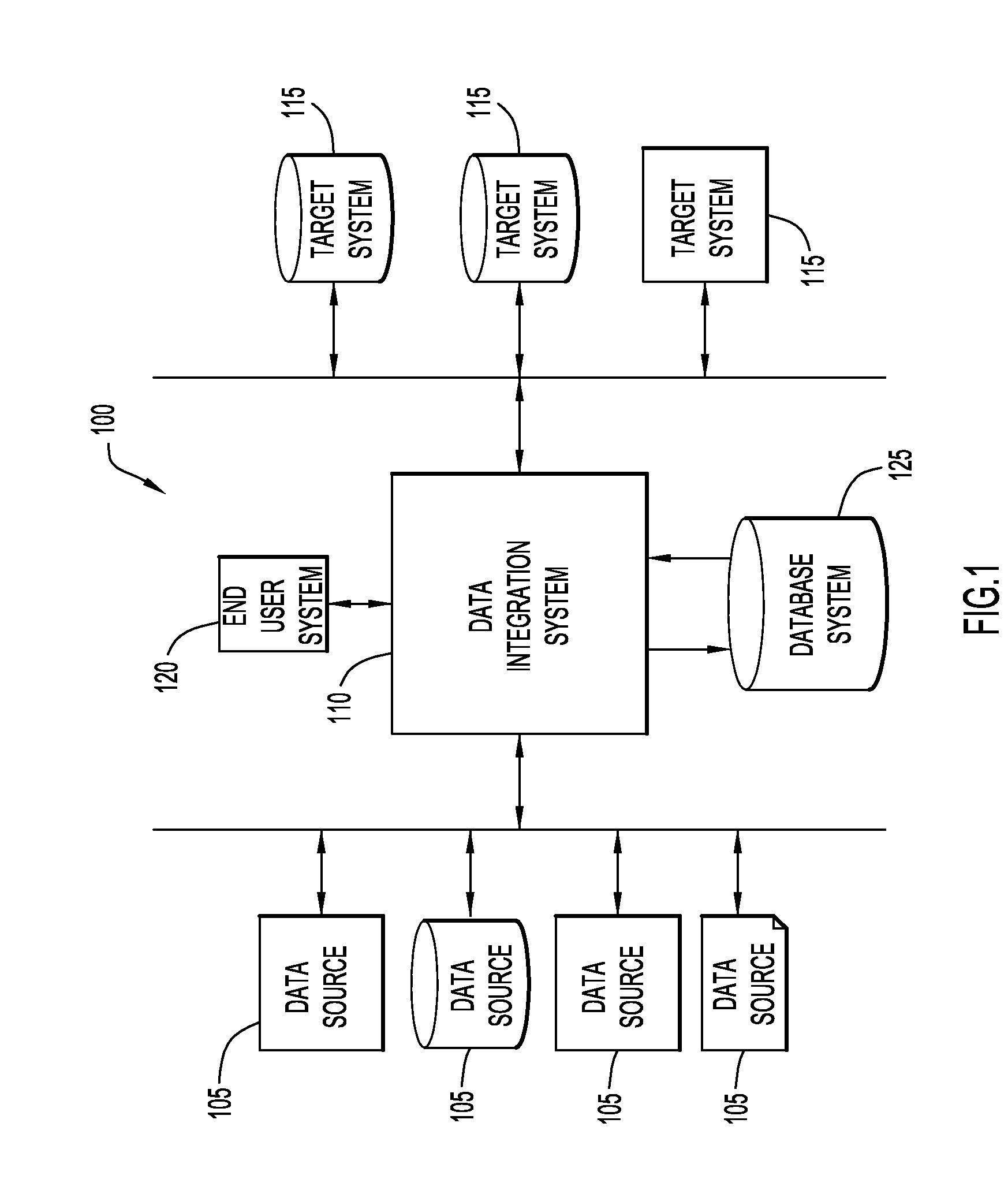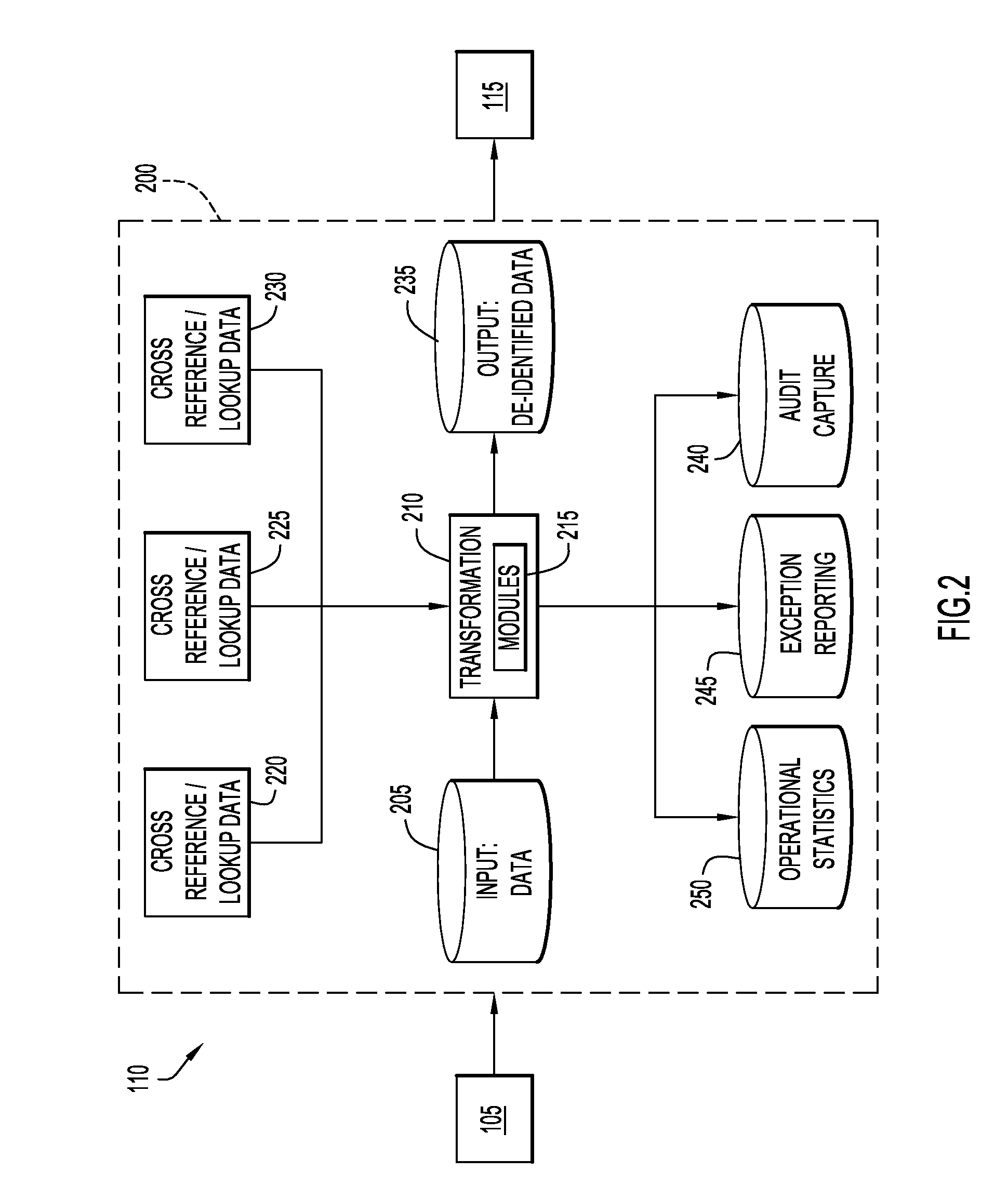De-Identification of Data
a data and data technology, applied in the field of de-identification of data, can solve the problems of consuming sensitive fields and information, putting data confidentiality and network security at risk, and built-in techniques may not be effective in sufficiently de-identification of data
- Summary
- Abstract
- Description
- Claims
- Application Information
AI Technical Summary
Benefits of technology
Problems solved by technology
Method used
Image
Examples
Embodiment Construction
[0012]FIG. 1 represents a system or platform 100 for facilitating integration of various data of a business enterprise. The platform 100 includes a plurality of computer-implemented business processes, each of which may include a plurality of different computer applications and data sources. In this embodiment, the platform includes several data sources 105. These data sources 105 may include a wide variety of data sources (e.g., computer systems, database systems, applications, files, etc.) from a wide variety of physical locations. For example, the data source 105 may include database systems such as IBM® DB2® (IBM and DB2 are trademarks of International Business Machines Corporation, registered in many jurisdictions worldwide), as well as database systems or other application programs from many other sources, such as Oracle, Sybase, Microsoft, EMC, and additionally, complex flat files, FTP files, or other systems or sources that provide data to the business enterprise. The data s...
PUM
 Login to View More
Login to View More Abstract
Description
Claims
Application Information
 Login to View More
Login to View More - R&D
- Intellectual Property
- Life Sciences
- Materials
- Tech Scout
- Unparalleled Data Quality
- Higher Quality Content
- 60% Fewer Hallucinations
Browse by: Latest US Patents, China's latest patents, Technical Efficacy Thesaurus, Application Domain, Technology Topic, Popular Technical Reports.
© 2025 PatSnap. All rights reserved.Legal|Privacy policy|Modern Slavery Act Transparency Statement|Sitemap|About US| Contact US: help@patsnap.com



